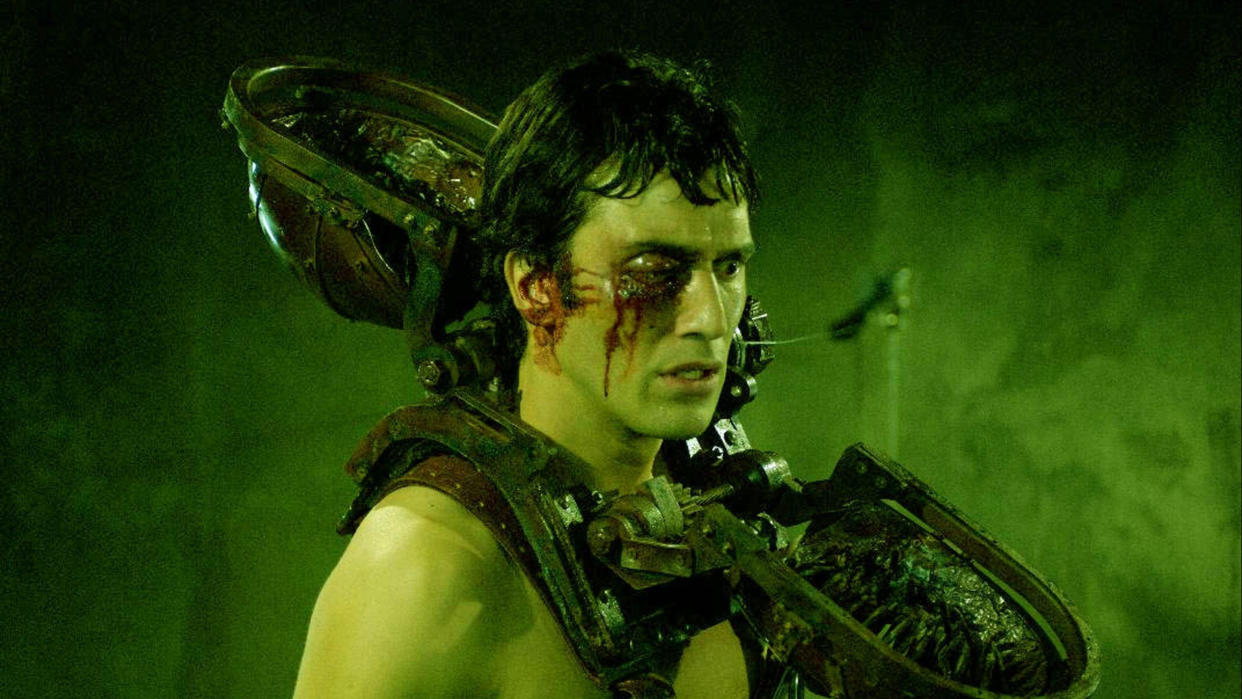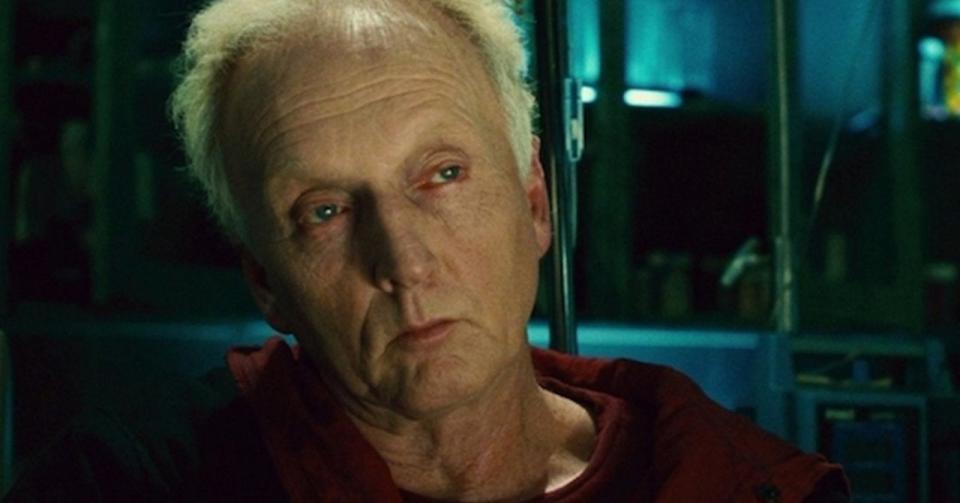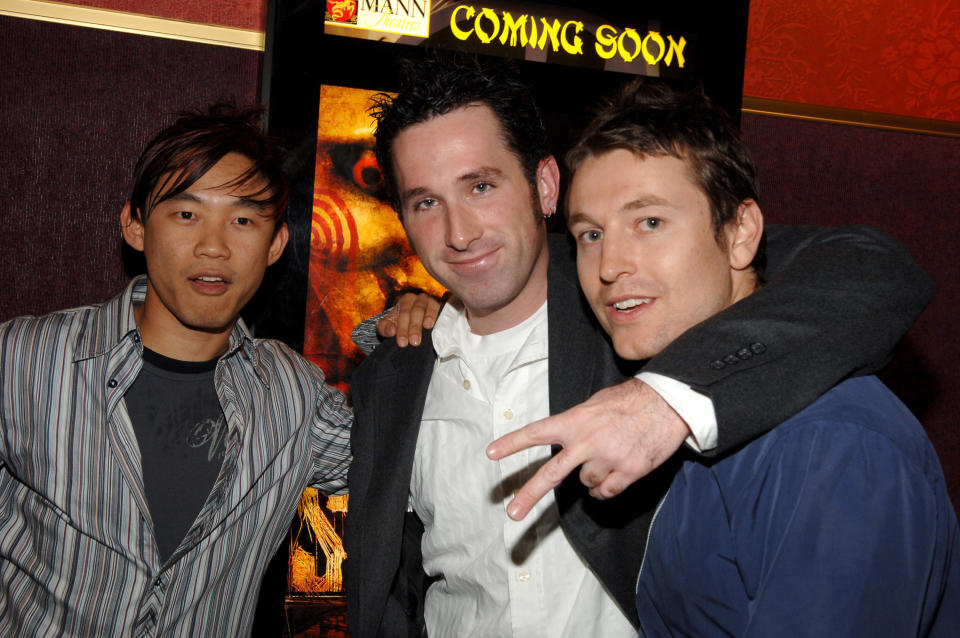Why 'Saw II' is the pinnacle of the noughties' goriest horror franchise

For a period of time in the noughties, Halloween belonged to the Saw franchise. Seven consecutive Octobers, from 2004 until 2010, were graced by journeys into the dark heart of John Kramer — aka the Jigsaw Killer — as he concocted bizarre and complex traps to test people’s moral fibre and their determination to stay alive. So determined was John that his work continued far beyond his death during the blood-soaked climax of 2006’s Saw III.
Read more: Chris Rock discusses different approach to his Saw reboot
A year before John met his maker at the hands of Angus Macfadyen and a power saw, the franchise delivered its difficult second album — Darren Lynn Bousman’s Saw II. 15 years on, that movie looks like the absolute high point of the series that dominated the horror genre. It’s the film that built on a surprise hit with an expanded mythology, effectively establishing the formula that would keep the franchise going for years, even without its white-haired talisman in the driving seat.
Much like Goldfinger established many of the tropes and conventions that make up the “James Bond formula”, Saw II set up the crucial elements of the franchise. There are multiple characters taking part in a loosely connected central scheme, with various Rube Goldberg machine death traps along the way, which ultimately proves to be itself a test for the main character. It’s also the first movie to feature a time-bending final plot twist — something that would become an occasionally brilliant, but often frustrating, hallmark of the series.
Watch: Trailer for upcoming Saw movie Spiral
The plot is fairly simple, at least in comparison to some of the later Saw outings. At the scene of one of Jigsaw’s deadly games, a cop finds a message addressed to her former colleague — Donnie Wahlberg’s Detective Eric Matthews. This leads them to the hideout of Tobin Bell’s Kramer, who reveals he has kidnapped Matthews’s son Daniel as part of an elaborate trap.
An apparently unconnected group of people — including Daniel and previous Jigsaw survivor Amanda (Shawnee Smith) — are locked in a house filled with poisonous gas. They each must find antidotes concealed within other traps in order to survive. Kramer, however, tells Matthews that his son is “in a safe place” and that Matthews will see him again as long as he is able to just sit and talk to him for the next few hours.
Read more: Halloween 2020 viewing guide
Matthews isn’t able to do so and, witnessing his son in danger as others die around him, he beats Kramer until the killer agrees to take him to the house. There, it is revealed that the scenes in the house were pre-recorded rather than live and that Daniel was being kept alive within a safe next to where John had been sitting the whole time. The film ends with Amanda (Shawnee Smith) revealed to have been in on the ruse all along as Kramer’s apprentice. She leaves Matthews to die in the house, having failed his test.

Saw II kicks everything up a notch from the first Saw film. After that movie’s dynamite opening weekend, Lionsgate moved quickly to greenlight a sequel — with a budget four times the size of its predecessor. This allowed for more elaborate traps and buckets of the gore that was mostly kept off screen in the stripped-down 2004 original. The elements that come to mind when you think of Saw were almost all born in its first sequel.
Read more: Saw creator explains The Invisible Man plot changes
The movie’s story had its origins in a spec script that music video director Darren Lynn Bousman was shopping around, called The Desperate, which had been rejected for being too similar to Saw. Not expecting to make a sequel, Saw creators James Wan and Leigh Whannell were unable to take the creative reins this time around and so, with a bit of finessing from Wan and Whannell, Bousman’s script became Saw II, with Whannell credited as co-writer.
In recognition of his involvement in turning Saw into a franchise beast with his debut feature effort, Bousman would go on to direct both Saw III and Saw IV — not to mention the upcoming reboot Spiral: From the Book of Saw, which has been penned by Chris Rock.

The traps of Saw II are as innovative as they are grotesque, achieved largely practically as opposed to the over-reliance on synthetic CGI bloodshed that would increasingly infect the franchise. Production designer David Hackl constructed 27 sets in three weeks to house Jigsaw’s deadly machines, with the infamous needle pit trap requiring 120,000 syringes to have their sharp tips switched with harmless ones.
In the six subsequent movies, the Saw franchise has never been able to match the lean, mean formula established by Saw II. It achieved the perfect balance of grisly visuals, intricate but uncomplicated plotting and a tricksy finale that established John Kramer as the smartest man in the room. Other movies have gone bigger, grimmer and sillier, but the recipe has never tasted as sweet.
The film would smash the box office success of Saw, earning $148m (£114m) worldwide. The total was bested by the rather less interesting Saw III a year later, but the financial and creative downturn began after that and never really abated. Spiral might be able to turn things around and, if it’s going to, it will hopefully be because Bousman recognises the genius of what he pulled off 15 years prior.
Watch: Tobin Bell discusses playing title role in franchise reboot Jigsaw

 Yahoo Movies
Yahoo Movies 
